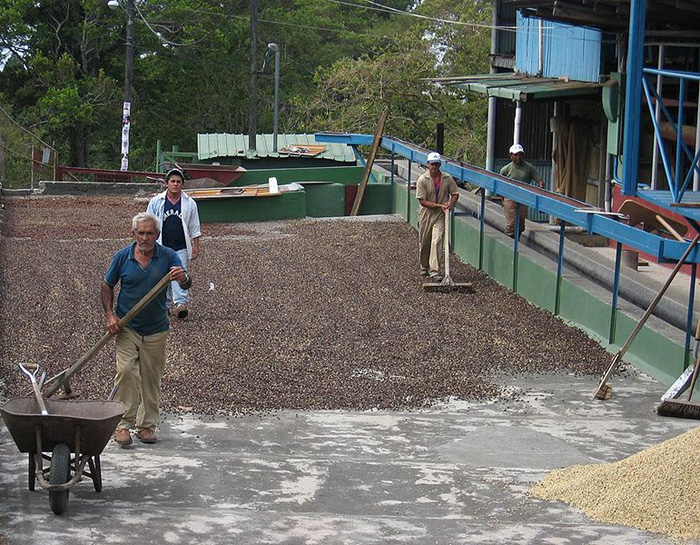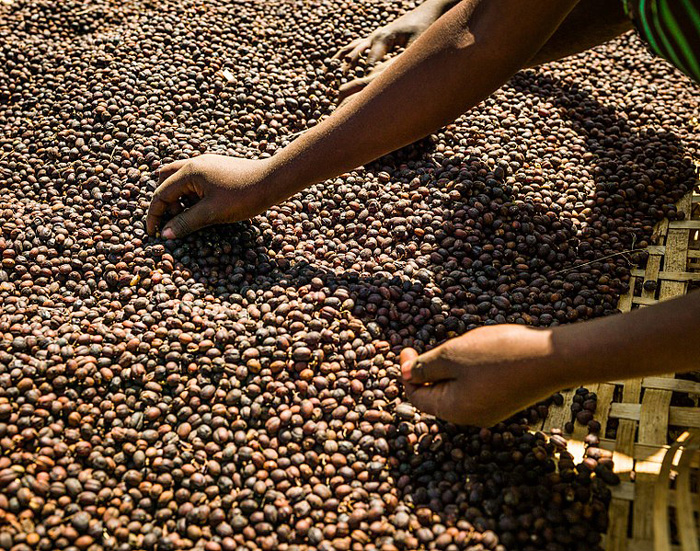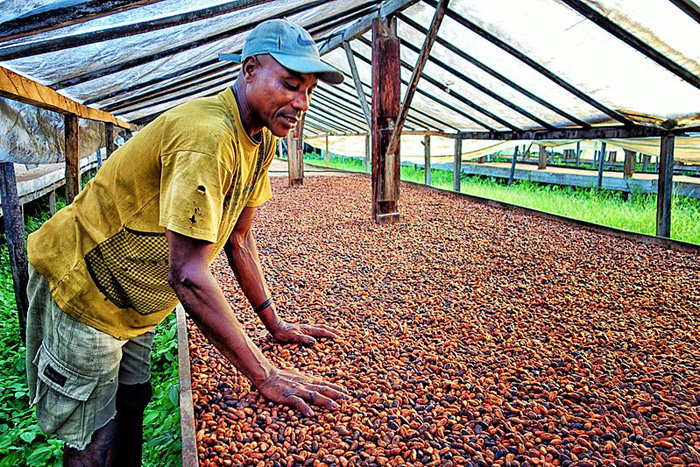
Because of the high levels of specific compounds and organic contaminants, such as tannins and caffeine, that pose a threat to the environment if released untreated, wastewater treatment plays a vital role in the coffee industry. Residues from milling, pulping, washing, and fermentation are all part of the wastewater produced during the processing of coffee. The following is an in-depth outline of the waste treatment procedures normally used in the coffee industry:
Sources of Wastewater in Coffee Industry
There are a number of steps in the coffee-producing process that result in wastewater. Wastewater from the coffee industry primarily comes from:
- Instant Production of Coffee:
- Drying by spray or freezing:
Cleaning equipment during these operations might add to the amount of wastewater generated.
- Concentration
The process of concentrating coffee extract results in wastewater, which frequently contains significant amounts of dissolved solids.
- Extraction
The wastewater produced during the extraction of coffee’s soluble components contains both dissolved organic compounds and solid coffee grounds.
- Dry Processing:
- Only occasional equipment washing results in low wastewater production, even though this method uses less water overall.
- Roasting Coffee Beans:
- Although roasting does not directly result in wastewater production, the cleaning and cooling of equipment may produce wastewater that contains organic compounds and oils.
- Coffee Packaging:
- Cleaning
Just like in previous steps, wastewater, including cleaning chemicals and residues, might be produced during the cleaning of packaging equipment.
- Wet Processing:
- Washing
Wastewater containing significant amounts of organic contaminants is generated during the washing of the beans during post-fermentation.
- Fermentation
At this stage, the mucilage is broken down, and organic acids and sugars abound in the wastewater.
- Pulping
The process of peeling coffee cherries results in a lot of wastewater that is rich in residues and organic matter.
- Café Operations:
- Brewing
The water that is left over after brewing coffee is usually quite small, although it may include oils and organic matter.
- Cleaning
When coffee machines, equipment, and other utensils are washed, oils, coffee residues, and detergents end up in the wastewater.
Each of these sources increases the coffee industry’s wastewater load, which poses different issues when it comes to treating and managing wastewater. To minimize the environmental effect, it is necessary to treat wastewater effectively using technologies like advanced oxidation processes, constructed wetlands, or anaerobic digestion.

Characteristics of Coffee Wastewater
The wastewater produced during the processing of coffee has several unique qualities that, if not handled correctly, might harm the environment. The following are examples of physical, chemical, and biological characteristics:
Physical Characteristics:
- Temperature
Because of the heat created throughout the processing phases, the coffee wastewater’s temperature might vary, but it is often greater than the ambient temperature.
- Smell
The anaerobic breakdown and volatile chemical components give it a distinct, distasteful smell.
- Color
Coffee wastewater usually has a dark brown hue because it contains phenolic compounds, tannins, and organic matter.
Chemical Characteristics:
- Phenolic Compounds
Toxic effects and difficulties in treating wastewater might result from the existence of phenolic compounds.
- Suspended Solids and Total Dissolved Solids
The turbidity of wastewater is worsened by the prevalence of high amounts of Suspended Solids and Total Dissolved Solids.
- Chemical Oxygen Demand
Due to the existence of both biodegradable and non-biodegradable organic compounds, the COD is likewise high.
- Nutrients
Receiving bodies of water may become eutrophic due to the presence of high levels of nutrients like phosphorous and nitrogen.
- pH
Because of the organic acids it contains, coffee wastewater tends to be acidic, with pH levels between 3.5 and 5.0.
- Biochemical Oxygen Demand
In most cases, a high Biochemical Oxygen Demand level indicates a substantial quantity of biodegradable organic matter.
Biological Characteristics:
- Biodegradability
Despite the abundance of organic matter in the wastewater, not all of these compounds degrade easily when exposed to microbes.
- Microbial Load
An improper treatment of coffee wastewater might hasten its anaerobic decomposition. This is due to the large microbial load it contains, which includes yeast, fungi, and bacteria.
Effective management and treatment of coffee wastewater
For sustainable coffee production and minimal environmental impact, wastewater treatment and management is of the utmost importance. The processing of coffee beans results in the production of coffee wastewater, which is also called coffee effluent. This wastewater is marked by elevated concentrations of contaminants, nutrients, and organic matter. For the purpose of efficiently managing and treating coffee wastewater, the following strategies and technologies can be utilized:
- Improving Process and Reducing Sources
- Optimizing the Process
Reduce pollution from coffee production by making certain modifications.
- Conserving Water
Reduce the amount of wastewater generated by implementing water-saving technologies and practices in the coffee processing industry.
- Pre-Treatment Methods
- Sedimentation
Sedimentation tanks allow suspended materials to settle out of the wastewater.
- Screening
Mechanical sieves or screens are used to filter out any debris or large solids from the wastewater.
- Primary Treatment
- Anaerobic Digestion
Produce biogas (methane) and other sustainable energy by breaking down organic materials in anaerobic digesters, which do not require oxygen.
- Aerobic Treatment
When organic contaminants are exposed to oxygen, aerobic treatment technologies like aerated lagoons or activated sludge can accelerate the degradation process.
- Secondary Treatment
- Constructed Wetlands
Make use of constructed wetlands, in which biological processes filter and treat wastewater by means of a series of vegetated beds.
- Biofilters
To reduce pollution, use biofilters, which include layers of microorganisms and organic material.
- Tertiary Treatment
- Membrane Filtration
To eliminate dissolved pollutants and fine particles, employ membrane filtration methods such as reverse osmosis, nanofiltration (NF), and ultrafiltration (UF).
- Advanced Oxidation Processes
To get rid of any remaining pathogens and organic compounds, use an Advanced Oxidation Process such Fenton’s reagent, ultraviolet radiation, or ozonation.
- Byproduct Utilization and Nutrient Recovery
- Byproduct Use
Make biochar, animal feed, or compost out of coffee pulp and other waste materials.
- Nutrient Recovery
Recover fertilizer-grade nutrients like phosphorous and nitrogen from wastewater.
- Integrated Management Systems
- Integrated Treatment Plants
To accomplish all-encompassing wastewater management, build integrated treatment plants that integrate several treatment technologies.
- Zero Discharge Systems
Create and execute a system that treats and reuses all wastewater within the coffee industry in order to achieve zero discharge.
- Monitoring and Regulation Compliance
- Regulatory Compliance
To safeguard aquatic ecosystems and bodies of water, wastewater discharge must comply with all applicable local and international regulations.
- Constant Monitoring
Set up constant monitoring systems to monitor the amount and quality of wastewater and verify that treatment procedures are working.
- Community Engagement and Capacity Building
- Training Programs
Educate the coffee industry about wastewater control and sustainable practices.
- Community Participation:
Involve local communities in wastewater management projects to bring attention to the issue and encourage teamwork in finding solutions.

Benefits of Wastewater Treatment in the Coffee Industry
Numerous substantial economic and environmental advantages can be gained from treating wastewater in the coffee industry. Some important benefits are as follows:
Technological and Process Advantages
- Operational Efficiency:
- Process Optimization
Advanced treatment technologies can increase the overall efficiency of the process by improving the production system’s performance and reducing water use.
- Recovery of Resources:
- Nutrient Recovery
One way to encourage sustainable agricultural practices is to employ the nutrients that are recovered from wastewater in agriculture.
- Production of Energy
Anaerobic digestion of organic waste in wastewater produces biogas, which can serve as an energy source, thus decreasing dependency on external energy sources.
Health and Social Benefits
- Community Relations:
- Positive Community Impact
Business investments in wastewater treatment have a positive impact on local communities. This, in turn, helps to cultivate strong support and relationships.
- Improved Safety and Health:
- Safer Working Environment
Proper wastewater treatment enhances worker health and safety and decreases their exposure to dangerous contaminants.
- Reduced Disease Risk
The health of the surrounding communities and workers is improved when wastewater treatment reduces the likelihood of waterborne diseases.
Environmental Advantages
- Mitigation of Soil Contamination:
- Preventing Soil Degradation
Proper wastewater treatment and disposal help prevent soil pollution, maintain soil fertility and reduce the possibility of hazardous material buildup.
- Reduction of Smell and Visual Contamination:
- Enhanced Visual Appeal
Treatment reduces visual contamination and unpleasant odors, improving the quality of life of workers and nearby communities.
- Conserving Water:
- Water Reuse
Reusing treated water for industrial purposes, such as irrigation, cooling, and equipment washing, helps lower the overall need for fresh water.
- Reduction in Water Pollution:
- Protecting the Ecosystem
When treated correctly, wastewater has less of an effect on aquatic ecosystems. This helps to keep streams, lakes, and rivers healthy and preserve biodiversity.
- Removal of Contaminants
In order to keep natural water bodies clean, wastewater must first be treated to remove dangerous particles including solids, chemicals, and organic matter.
Economic Advantages
- Regulatory Compliance:
- Improved Access to Markets
Expanding into new markets is a direct result of meeting environmental criteria, particularly in areas with stringent environmental regulations.
- Avoiding Penalties and Fines
It’s important to follow wastewater regulations to avoid legal trouble and expensive fines for environmental noncompliance.
- Cost Savings:
- Lower the Cost of Waste Disposal
To minimize the financial burden of disposal and the risk of fines for failing to comply with environmental standards, effective treatment minimizes the waste’s toxicity and volume.
- Decreased Water Purchase Costs
Saving money on freshwater is possible for the coffee industry by reusing treated water.
Conclusion
By installing an efficient wastewater treatment system, the coffee industry can contribute to sustainability and resource conservation and guarantee compliance with environmental regulations. Ongoing advancements in treatment technologies are enhancing the effectiveness and practicality of controlling coffee wastewater.
